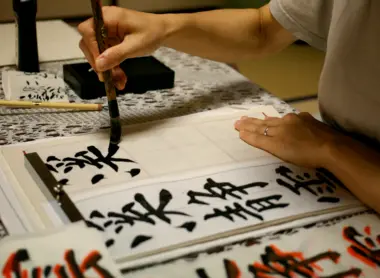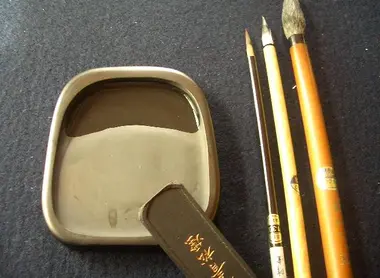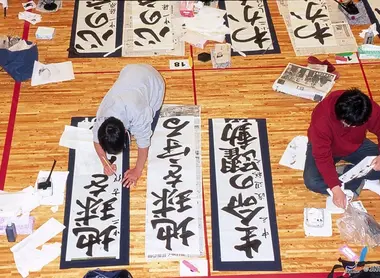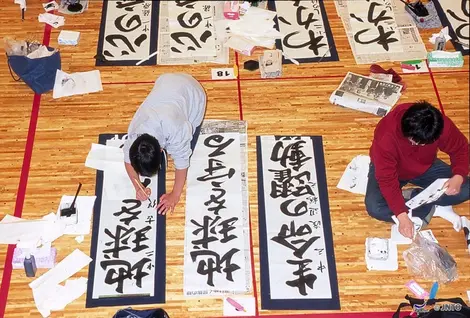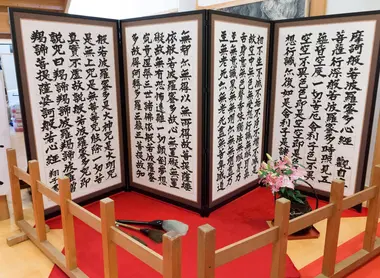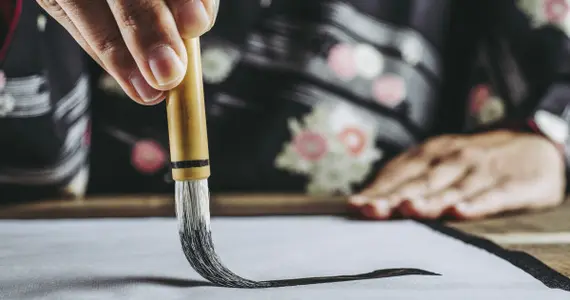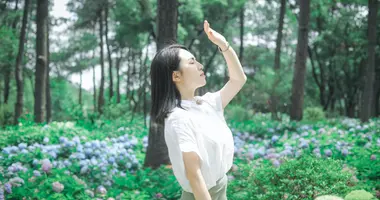Japanese calligraphy, a traditional art blending aesthetics and spirituality
- Published on : 10/05/2024
- by : Antoine Legastelois / J.R.
- Youtube
Japanese calligraphy, also known as Shodō, is an ancestral art that has been practiced in Japan for over 1500 years. More than just a form of writing, it's a genuine path to personal development, combining beautiful strokes and Zen philosophy. Let's discover this fascinating universe together, from its Chinese origins to its Japanese specificities, via the different styles and tools.
The origins of Japanese calligraphy: the influence of China
Japanese calligraphy has its roots in China, where the art first appeared some 3,000 years ago. In the early days, Japanese calligraphers were largely inspired by Chinese works, using Chinese characters (kanji) adapted to Japanese script. This style, known as karayo, was predominant until the invention of kana syllabaries.
In the 6th century, the introduction of Buddhism and Confucianism in Japan greatly contributed to the development of calligraphy. Monks such as Kukai were sent to China to study and bring back sacred texts. They thus imported the art of beautiful writing, which gradually spread throughout the archipelago, giving life to sutras, poems and literary works.
The golden age of the Heian period: the emergence of a distinctly Japanese style
It was from the end of the 9th century onwards that Japanese calligraphy really took off, distinguishing itself from Chinese models. The Heian era (794-1185) marks the golden age of this art, with the emergence of a typically Japanese style based on Japanese aesthetics. The kanas (hiragana and katakana), original syllabaries, were introduced and widely used, notably by court ladies such as Sei Shonagon and Murasaki Shikibu.
Three illustrious calligraphers stand out at this time: the emperor Saga, the monk Kukai, founder of the Shingon school, and the noble Tachibana no Hayanari. Nicknamed the "Three Brushes" (Sanpitsu), they laid the foundations of classical Japanese calligraphy and are still regarded as benchmarks today.
The great masters and different calligraphic styles
Over the centuries, numerous styles of writing developed in Japan, including the five main ones, all inherited from China: tensho (sigillary), reisho (clerical), sosho (cursive), gyosho (semi-cursive) and kaisho (regular). Each style corresponds to a specific era, tools and aesthetic criteria.
Among the master calligraphers who have left their mark on history are Zen monks of the Kamakura period (1185-1333) such as Musō Soseki, who excelled in the fluid cursive style reflecting the calligrapher's state of mind. Later, Hon'ami Kōetsu (1558-1637) innovated by adding decorative motifs to the background of his works. Finally, modern artists such as Teshima Yūkei (1901-1987) adapted tradition to contemporary sensibilities.
The calligrapher's four treasures: Shodō equipment
To practice Japanese calligraphy, four essential tools are required:
- The brush (fude), consisting of a bamboo handle and animal hair of various sizes and textures
- Ink (sumi), in liquid or diluted stick form, obtained from soot and glue
- Ink stone (suzuri), a container in which to rub the stick to obtain the ink
- Handmade paper (washi) made from plant fibers such as mulberry, more resistant than Chinese rice paper
Other accessories are often added, such as paperweights, desk pads and personal seals. Choosing and mastering these "treasures " is an art in itself, and reflects the artist's sensibility.
Calligraphy, mirror of the state of mind: the deep connection with Zen
More than a simple writing technique, calligraphy is intimately linked to Zen philosophy and the quest for harmony between body and mind. The right calligraphic gesture requires concentration, letting go and deep breathing, like zazen meditation.
Each brushstroke is made in the present moment, in a single stroke, without repentance. It expresses the calligrapher's vital energy (ki) and emotions at that very moment. A successful work respects the principles of balance of forces and harmony in composition, and embodies the Japanese aesthetic concept of wabi-sabi, between simplicity and refinement.
Calligraphy is practiced by many Buddhist monks as a means of spiritual awakening. It is also at the heart of the tea ceremony: contemplating a work of calligraphy encourages participants to reflect.
Learning and practicing Japanese calligraphy today
Although Japan has entered the digital age, calligraphy remains a lively art appreciated by all. It is taught from an early age in schools, and many adults continue to take classes in workshops.
Beginners generally start by learning how to handle a brush and draw kanas. Then they practice reproducing increasingly complex kanji in various styles, inspired by the models of the great masters. Practice, patience and observation are the keys to progress in this demanding art.
Calligraphy exhibitions, competitions and demonstrations are regularly organized to promote this discipline. This small museum in Tokyo, for example, features the famous contemporary calligrapher Mitsuo Aida. Visitors to the Yanesen Tourist Infomation & Culture Centre can also take part in workshops.
Calligraphy as an art of living: present in Japanese art and daily life
Beyond its artistic dimension, calligraphy permeates many aspects of Japanese culture. In traditional arts such as flower arranging (ikebana ) or ink painting (sumi-e), mastery of the line is paramount and is directly inspired by calligraphic techniques.
Calligraphy is also very much a part of everyday Japanese life. Brushed words adorn the walls of homes and temples, decorated envelopes for special occasions, and posters and packaging. Calligraphy is available in a wide range of media and styles, from the most classical to the most modern.
At the start of each new year, the tradition of the kakizome consists in making the first calligraphy, inscribing one's wishes and determination for the months ahead. A moment of contemplation and creativity shared by all Japanese, young and old alike.
Japanese calligraphy is much more than an art of writing: it's an invitation to cultivate the beauty of the gesture, the serenity of the spirit and to reconnect with the essential. It's a priceless heritage that Japan is committed to preserving and extending beyond its borders. To find out more, discover our calligraphy courses in Kyoto and all our cultural activities in the imperial city.
